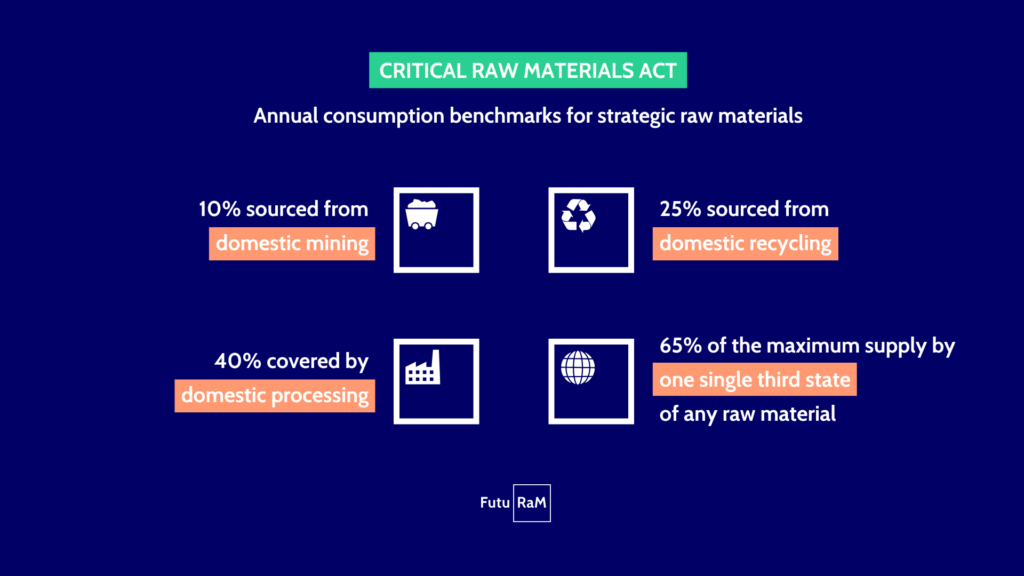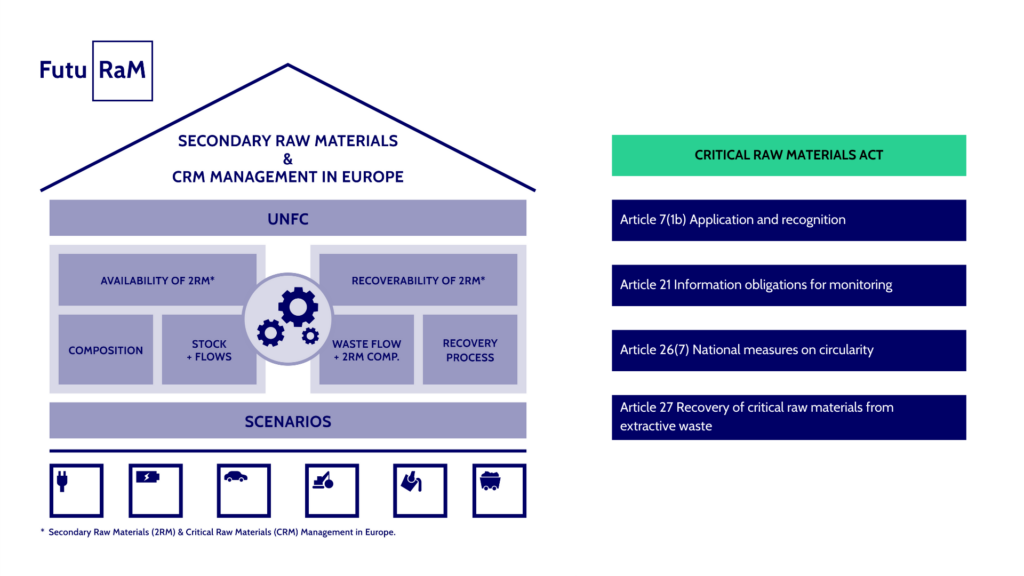Brought to you by Antje Wittenberg und Marina v. Vietinghoff-Scheel from BGR
The European Union has enforced its Critical Raw Materials Act (CRMA) in record time. What started with the publication of the European Commission´s proposal on 16 March 2023 was immediately picked up by the Council of the European Union and by the European Parliament in various committees under the Swedish presidency. The final approval by the Council for a strategy to secure a sustainable supply of raw materials critical for the green transition, digital industries, and defence sectors was achieved within one year by Monday by 18 March 2024. Upon the publication in the Official Journal on 3 May 2024 the CRMA entered into force on 23 May 2024.
The CRMA aims to strengthen the European critical raw materials capacities along all stages of the value chain and hence, the resilience of its critical raw material supply chains by reducing dependencies, making preparations and promoting supply chain sustainability and circularity.
CRMA benchmarks
The benchmarks set to be reached by 2030 provide further guidance on priorities. In a nutshell, domestic capacities along the strategic raw material supply chain and for diversifying EU supply shall meet at least EU’s annual consumption:

The promotion of a sustainable and circular economy aims also to improve the availability of critical raw materials. Hence, a strong secondary market is key to meet the ambitious benchmarks of 25% referring to the Union’s recycling capacity. Two requirements tie this up:
- First and foremost, knowing the occurring and available stocks, waste streams and their composition. With this knowledge, recoverable waste streams containing the critical/strategic raw materials can be targeted.
- Secondly, the European Union needs to support the framework and infrastructure for recycling facilities and processes to achieve this benchmark.
FutuRaM’s supporting role
FutuRaM has already begun addressing the first requirement by developing a knowledge base for six specific waste streams: batteries, electrical and electronic equipment, vehicles, mining, slags and ashes, and construction and demolition. As we speak, the composition of the mentioned waste streams is being analysed based on a large number of datasets. Looking ahead, FutuRaM results will enable the prioritisation of existing waste streams containing a high percentage of recoverable strategic raw materials on a European level.
Improving waste collection and recovery of raw materials
By obliging operators and Member States (Section 1, art. 26 to 29 of the Regulation (EU) 2024/1252 of the European Parliament and of the Council of 11 April 2024) to improve the recovery of critical raw materials from products and waste containing critical raw materials in the EU, market value chains for recycled critical raw materials must be boosted.
Member States are required to take measures to improve the collection of critical raw material-rich waste and ensure its recycling into secondary critical raw materials. Current operators are to assess the possibility for recovery from those sites and to gather information on the critical raw materials content of the waste they are generating as well as on the waste stored on their sites.
In case of closed and abandoned mines, the CRMA makes Member States responsible for gathering this data – from permitting files as well as targeted sampling campaigns – and publishing it in an openly accessible database. Moreover, the related database must include a classification of the closed extractive waste facilities according to the United Nations Framework Classification for Resources (UNFC).
Answering to these requirements, FutuRaM is actively utilising UNFC while developing a tool that enables a better understanding of the viability of raw material projects. Highlighting the importance of UNFC for the circular economy, FutuRaM has already held its first workshop in Germany, organised by BGR/DERA on 6 May 2024.

As a research project funded by Horizon Europe, FutuRaM results can provide relevant insights for the implementation of several sections of the CRMA such as Article 27 addressing the recovery of critical raw materials from extractive waste. FutuRaM is highly active in both areas on data and on UNFC (see also FutuRaM News, 6 March 2024).
Observations and recommendations made by FutuRaM are generally emphasising the importance of high-quality data on the materials used in various key waste streams. This data is crucial for developing and establishing an efficient and effective circular economy.
Strategic projects
The CRMA also aims to incentivise technological progress and resource efficiency and boost concrete strategic raw material projects. To be recognised as strategic project several criteria shall be met such as:
“Being part of the list raw materials used in strategic sectors such as renewable energy, digital, aerospace and defence technologies and for whose projected demand growth compared to current levels of supply, combined with the difficulties of scaling up production, are likely to create supply risks in the near future”.
The European Commission states that “projects contributing to build strategic raw materials capacities across all value chain stages, both within and outside of the EU, can apply for the status of “Strategic Project”.
Projects will be selected based on their contribution to the security of supply of strategic raw materials, technical feasibility, ability to substitute strategic raw materials, sustainability, and social standards.” (see also Chapter 3, Section 1, Article 5 of the CRMA).
The first Call for Strategic Projects submitted by 22 August 2024 brought in 170 applications of which 30 are in the field of recycling. European Commission announced to release the list of recognised Strategic Projects by end of March 2025 while the next cut-off date for the second Call for Strategic Projects is envisaged in the first Quarter of 2025 – no date specifics yet.
Read more
- Questions and Answers on the Critical Raw Materials Act (23 May 2024)
- UNFC in the EU Critical Raw Materials Act (22 April 2024)
